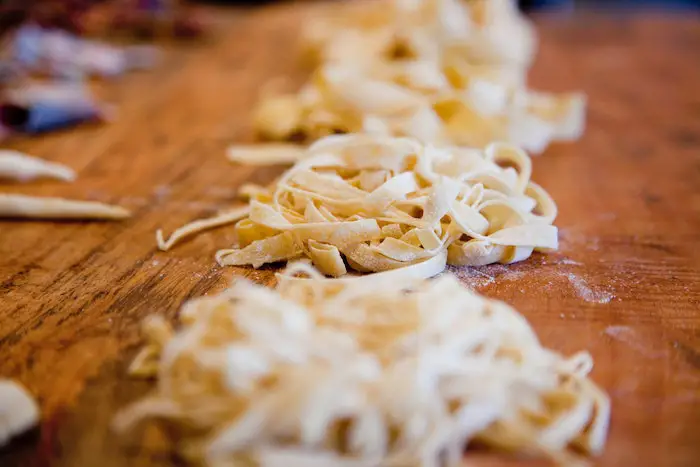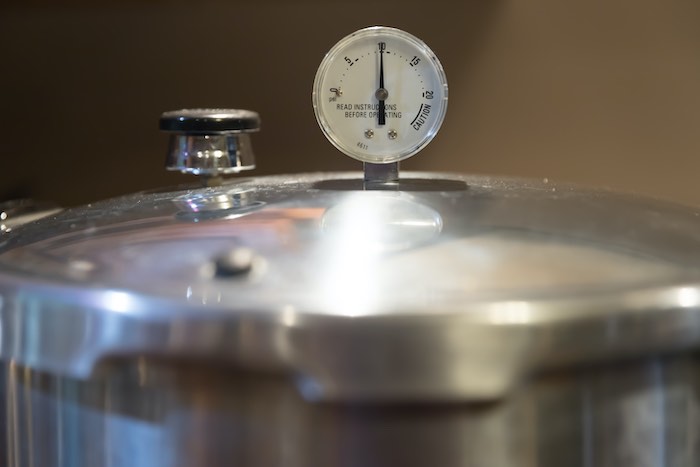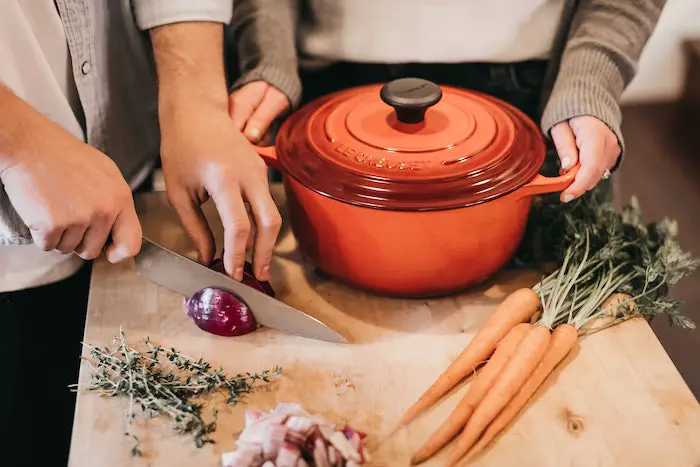When making turkey dinner, it’s quite the production. One thing that makes this orchestrated meal easier is letting the turkey soak in brine. However, after you make a batch of brine, you may find that you have a good amount of it left over. You don’t want to waste it, so what are some good uses for leftover turkey brine?
There are roughly seven uses for leftover turkey brine. You can use it during the course of cooking your turkey dinner or use it instead for other recipes later on. It can be used as a basting accompaniment or as a seasoning for things like mashed potatoes, egg noodles, or stuffing. Additionally, it also works well for casseroles, soups, or even composting.
That said, it is imperative that you don’t use the spent leftover turkey brine in any capacity. The risk of severe illness is far too high. You’re letting poultry sit in the solution for 12 to 48 hours, and this will cause that particularly brine to accumulate a nasty buildup of things like bacteria, Salmonella, and other hazardous microorganisms.
About Using Leftover Turkey Brine
Before getting into the various ways that you can use your leftover turkey brine, there are a few things to first take into consideration. Primarily, never reuse spent turkey brine. Always throw it away after a bird has rested in it.
Disposal is mandatory for used brine because the turkey will leave behind things like Salmonella, germs, and bacteria, all of which will make people incredibly ill. That’s the last thing you want to cause to happen. If you want to use brine for other aspects of your turkey dinner or for other dishes down the road, double your brine recipe if the current unspent amount of brine left over isn’t sufficient.
Storing Leftover Turkey Brine
If you choose to make additional brine for later use, ensure you separate and store what you want to use in other recipes before you touch the turkey. It’s imperative that you avoid contaminating anything with bacteria from the raw meat. Liquids can go into a freezer-safe container if you plan on using the brine with other recipes after the time of preparation. Store dry rubs in an airtight container, and put those containers on the counter or in the fridge.
Ensure the Flavor Profile Will Match
Before using your leftover brine in other recipes, make sure the brine’s ingredients will be appropriate for those other dishes. There are various ways to make turkey brine, and not all will be appetizing in just any recipe.
1. Basting Accompaniment
While cooking your turkey dinner after brining the meat, you can use leftover dry or wet brine for basting your bird throughout the cooking process. However, this will heavily impinge on the seasonings you’ve also tried to incorporate into the meat. Generally, brine is heavy with salt, so you may need to water it down a little to avoid making your meat super salty.
Also, don’t use any brine in your gravy—it will be far too salty. It’s always best to use the drippings after cooking instead for gravy-making purposes.
2. Mashed Potatoes
Dry brines are excellent when making mashed potatoes. These allow you to keep in line with the overall flavor profile of your turkey dinner. Plus, the heavy salt contained within most brine recipes are ideal for ensuring you flavor the potatoes perfectly.
You can use wet brine as well, but you may want to avoid doing so if the brine recipe includes something like apple cider vinegar. It simply won’t taste very good with potatoes, unless you’re into that kind of flavor palette.
3. Homemade Egg Noodles

Another great way to use leftover turkey brine is to include it in your homemade egg noodle recipe. Even if it’s heavy on the vinegar, either the flour will absorb most of the strong flavor or it will cook out upon boiling. However, you should only use a few tablespoons in your noodle recipe to avoid over-salting it.
4. Homemade Stuffing
Because bread soaks up tons of seasoning, excess turkey brine is quite ideal for including with your homemade stuffing. You will generally have to dilute your brine with some water or salt-free broth, though. However, you can use up to a cup of the brine depending on how much you’re going to make.
Alternatively, you could coat your bread pieces so just enough of the brine absorbs. Afterward, you could stuff the brine-soaked stuffing into the bird as usual or simply cook it separately. Don’t use it to season the stuffing after you’ve finished cooking, however. The strong flavors of salt and vinegar may not end up being palatable.
5. Casserole Seasoning
Using leftover turkey brine is great in various casserole dishes. You can use it to make a casserole with whatever remains from your initial turkey dinner to only further amplify the existing flavors and make a delicious new meal. You could also put it into any casserole that could use a salty, tangy boost.
This is ideal for recipes with ingredients that usually take a lot of seasoning to be flavorful. Things that fall into this category generally include unseasoned bread, noodles, potatoes, meat, and thick vegetables. As an example, ingredients such as Brussels sprouts, cabbage, carrots, parsnips, and rice will often greatly benefit from the seasoning that leftover turkey brine provides.
6. Soup Base
One of the best uses for leftover turkey brine is applying it to a soup base. You can use it to extract the marrow from the carcass and make your own bone broth with it. For this, it’s recommended that you only use up to about four cups of your leftover brine. However, you should be sure to double up on the water.
If you were to use three cups of wet leftover turkey brine, you should also incorporate six cups of water. This is important to remember because the salt and vinegar will cook down and make the saltiness very pronounced due to boiling. Boiling will always increase the salt content of any given recipe.
7. Composting
As long as your leftover turkey brine doesn’t contain anything like dairy, you can put it into your compost pile, too. However, if your brine contains things like olive oil or butter, you can only add a small portion of it to the compost pile in small increments.
While liquids are usually fine, you will need to ensure that all the ingredients will be suitable for such use so as not to create problems down the road.
See Also:
How To Fix Undercooked Baked Potatoes (2 Ways)
4 Best Cooktops With Wi-Fi
10 Ways To Make Thai Food Spicy
Difference Between Jambalaya And Paella


